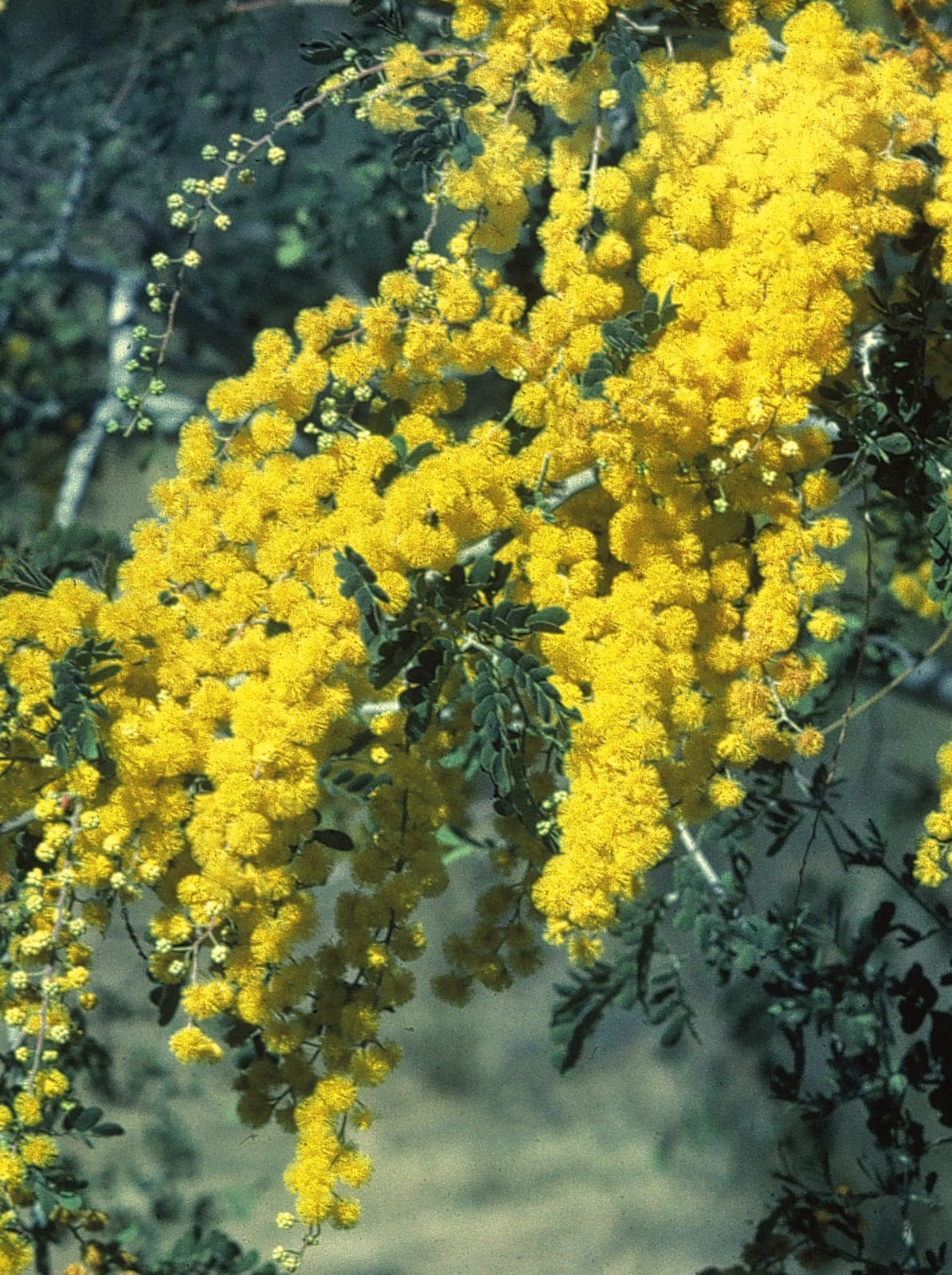Acacia spectabilis
Credits
Article from New Trees by John Grimshaw & Ross Bayton
Recommended citation
'Acacia spectabilis' from the website Trees and Shrubs Online (treesandshrubsonline.
Genus
Common Names
- Glory Wattle
- Mudgee Wattle
Synonyms
- Racosperma spectabile (A. Cunn. ex Benth.) Pedley
Shrub or tree to 6 m. Branchlets terete or with indistinct ridges, with short hairs or glabrous; young shoots pale, glabrous or shortly pubescent, rarely glaucous-purple. Leaves bipinnate, blue-green and glaucous, 2–8 cm long; pinnae 2–6(–7) pairs, (0.5–)1–3.5 cm long, narrowing towards the base; pinnules (2–)4–8 pairs, narrowly obovate or oblong, 0.7–1.6 × 0.2–0.7 cm, glabrous, with two to three obscure veins, apex rounded or emarginate; petiole distinct, 0.5–1.2 cm long, terete, often with a gland at its apex, glabrous or hairy; rachis glabrous or hairy, usually without glands. Inflorescence elongated axillary racemes, or terminal/axillary panicles; heads globular with 12–20 light golden flowers. Flowers densely packed, 5-merous, petals glaucous, stamens numerous. Legume straight-sided, 4–10(–17) × 1–1.5 cm, thin and leathery, purplish- or blue-brown and glaucous. Flowering July to November, fruiting November to June (Australia). Chapman et al. 2001a, 2001b, Kodela & Harden 2001. Distribution AUSTRALIA: New South Wales, Queensland. Habitat Open forest, scrub or heath with well-drained soils. Often associated with Callitris spp. USDA Hardiness Zone 9–10. Conservation status Not evaluated. Illustration NT62, NT68.
With its large inflorescences, glaucous foliage and silvery bark, Acacia spectabilis is much appreciated as a garden tree in Australia (Elliot & Jones 1982) and in southern California, but is rare in our region. It is regarded as moderately frost-resistant in Australia (Australian National Botanic Gardens 1972) and should survive in the mildest parts of western Europe and the Pacific Coast. It is grown in Cornwall, and a tree at Tregrehan planted in 1996 is now 3 m tall, after snow damage to the brittle wood (T. Hudson, pers. comm. 2006). It is tolerant of a range of conditions, from quite dry to moist (Elliot & Jones 1982).

